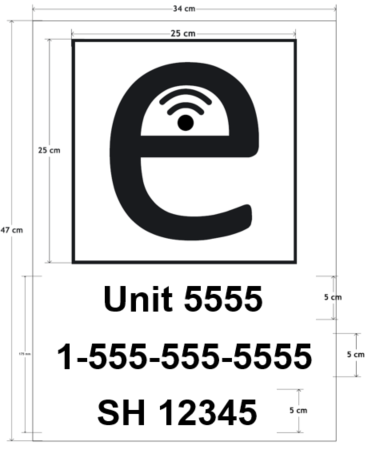As the transportation sector evolves, Transport Canada is looking at ways regulations can be updated to help keep Canada competitive and encourage innovation, while keeping Canadians safe.
During a two (2)-year period, Transport Canada tested a regulatory sandbox on electronic shipping documents. The concept of a regulatory sandbox is to enable regulators to try out innovative ideas before deciding if a regulatory change is needed. This project allowed us to test the use of electronic shipping documents for dangerous goods shipments in a safe way.
On this page
- Why use electronic shipping documents?
- What we learned from the regulatory sandbox project
- Are you interested in using electronic shipping documents?
- Information for first responders
- Contact us
Why use electronic shipping documents?
The Transportation of Dangerous Goods Regulations currently requires a physical paper shipping document to accompany most dangerous goods while they are in transport. Shipping documents include information on the dangerous goods being transported and give first responders the information they need to respond to incidents when they occur. Unfortunately, paper documents can be lost or destroyed, which can cause delays in emergency response.
Electronic shipping documents present several potential benefits, as they can be:
- easier to read
- simpler to update
- quicker to share with emergency responders
- integrated with other digital business processes
- more flexible and able to give Canadian businesses a competitive edge, and
- aligned with international regulations.
What we learned from the regulatory sandbox project
The pilot project was carried over two (2) years, ending in March 2022 with a goal to see if using electronic shipping documents might be a viable alternative to the mandated paper format for transporting dangerous goods in Canada via air, marine, rail and road.
While challenges emerged in trial-testing the conversion of hard copy shipping documents to digital, it was realized many benefits could be gained—including enabling first responders to access information without approaching potentially hazardous situations, enabling faster sharing of information, improving accuracy, and significantly reducing paper and ink usage. In fact, as a result of a seven (7)-company pilot, 21 million sheets of paper were saved while also greatly facilitating participants’ ability to search for and update shipping information.
As electronic shipping documents are not widely implemented in most countries, this made it difficult to draw on other governmental experiences. However, by taking an adaptive approach to evaluating the use of e-shipping documents for safely transporting dangerous goods in Canada, this project has helped inform future regulations.
Are you interested in learning about the results of the sandbox project? The key findings and next steps are highlighted in the executive summary of the Study on the use of electronic shipping documents for the transport of dangerous goods.
Are you interested in using electronic shipping documents?
Carriers interested in using electronic shipping documents instead of paper to transport dangerous goods must apply for an equivalency certificate. Find out how to apply.
If you meet the requirements, you will be granted permission to use electronic shipping documents for a two (2)-year period. Some of the requirements are:
- your company must have an existing electronic system in place. You will need to provide a demonstration of your system through a virtual meeting prior to issuance of equivalency certificate
- internet or cell connectivity are required at loading and unloading sites to update the electronic shipping document as dangerous goods are added or removed from the means of transport
- the electronic shipping document must be provided immediately upon request and must be communicated using two or more methods of information exchange, such as an electronic device, a single telephone call, a single electronic transmission (email), website or a web portal
- road vehicles must display a sign advising that electronic shipping documents are in use. The sign must include the unit number, the emergency telephone number and the equivalency certificate number. The sign (34 cm X 47 cm) must be displayed on the right side, left side and rear of the truck, for example:
- instructions on how to access electronic shipping documents must be available inside the road or railway vehicle
- companies are responsible for ordering and purchasing signs
The information provided above is not a comprehensive list of requirements. For further details on requirements for using electronic shipping documents, please send an email to tdgapprovals@tc.gc.ca.
Information for first responders
What would you do if you arrived on the scene of an incident involving dangerous goods? Consult these resources to find out how to access dangerous goods information with electronic shipping documents:
- visual guide for road vehicles
- YouTube video for road vehicles (0:25 seconds)
- YouTube video for rail vehicles (0:45 seconds)
Contact us
For additional information please send an email to TC.TDGRegulatoryProposal-TMDPropositionReglementaire.TC@tc.gc.ca.
Third-party information liability disclaimer
Some of the information on this page has been provided by external sources. The Government of Canada is not responsible for the accuracy, reliability or currency of the information supplied by external sources. Users wishing to rely upon this information should consult directly with the source of the information. Content provided by external sources is not subject to official languages, privacy and accessibility requirements.





